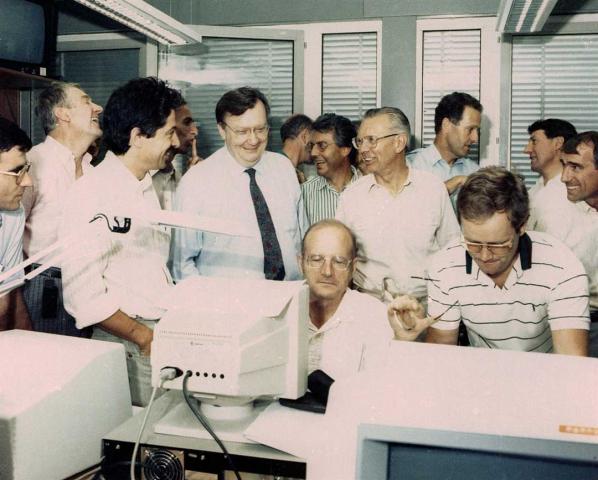Large Electron–Positron collider: First injection

With its 27-kilometre circumference, the Large Electron–Positron (LEP) collider was – and still is – the largest electron–positron accelerator ever built. LEP consisted of 5176 magnets and 128 accelerating cavities. CERN’s accelerator complex provided the particles and four enormous detectors, ALEPH, DELPHI, L3 and OPAL, observed the collisions.
LEP was commissioned in July 1989 and the first beam circulated in the collider on 14 July. The picture above shows physicists grouped around a screen in the LEP control room at the moment of start-up. Carlo Rubbia, Director-General of CERN at the time, is in the centre and former Director-General Herwig Schopper is on his left. For seven years, the accelerator operated at 100 GeV, producing 17 million Z particles, uncharged carriers of the weak force. It was then upgraded for a second operation phase, with as many as 288 superconducting accelerating cavities added to double the energy and produce W bosons, also carriers of the weak force. LEP collider energy eventually topped 209 GeV in the year 2000.
During 11 years of research, LEP and its experiments provided a detailed study of the electroweak interaction based on solid experimental foundations. Measurements performed at LEP also proved that there are three – and only three – generations of particles of matter. LEP was closed down on 2 November 2000 to make way for the construction of the LHC in the same tunnel.